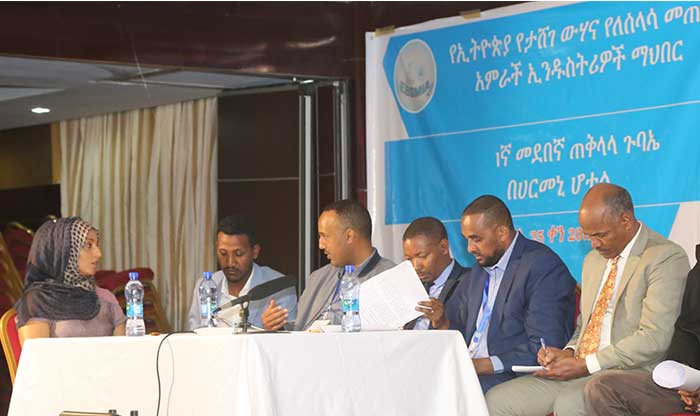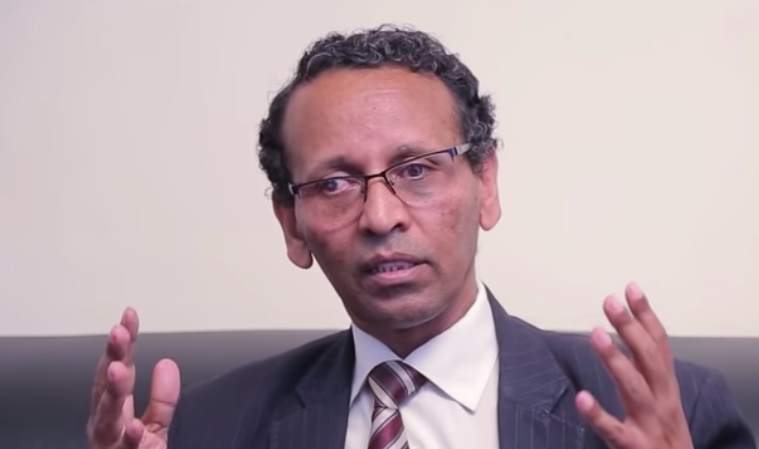
Fortune News | Sep 24,2022
A new market information system, which will provide market-related data to farmers, was developed by the Ministry of Trade & Industry at a cost of four million dollars.
The National Market Information System is expected to be operational this month. It will provide market price information on teff, wheat, sesame, haricot beans and corn to farmers, traders and consumers through short message system or interactive voice response (IVR) call, a technology that allows a computer to interact with humans through the use of voice.
The five commodities were chosen because of their wide consumption and economic importance, according to Yibeltal Assefa (PhD), trade information management centre director at the Ministry of Trade & Industry.
“Many intermediaries and brokers have been taking advantage of farmers due to their lack of knowledge about the market value of their produce,” he adds. “The system will also help buyers and traders make good decisions by allowing them to see which regions offer the lowest prices.”
Users can simply text to the hotline SMS line or call the IVR to know the price of commodities in their regions.
Research and design of the system began two years ago at the Ministry, with technical assistance from the Agricultural Transformation Agency. Installation of the system, which took five months, was awarded to the decade-old eCom Technology last April through a tender process.
“We are only waiting for Ethio telecom to provide us with a hotline number for launch,” said Mesay Zegeye, chief technology officer of eCom.
The system will require data to be fed into it from each of the marketplaces, which will be assigned two data encoders. New data entries will be validated at the Ministry by correlating them to international prices, previous entries and the prices collected from other markets.
“We have observed that it’s on Saturdays between 10:00am and 2:00pm that transactions peak,” said Yibeltal. “At which time the information is recorded.”
Users can simply text to the hotline SMS line or call the IVR to know the price of commodities in their regions.
The project, which is in its first phase, will initially be implemented in 31 marketplaces in Amhara, Tigray, Oromia and SNNP regional states, where the commodities chosen by the Ministry are largely grown.
The Ministry plans to incorporate over 20 commodities and 151 marketplaces in all the regions and the two charter cities, which have 71.4 million farmers that cultivate around 13 million hectares of land. It is expected that the project will be completed in seven years.
Experts commend the establishment of the agricultural information system.
It has always been producers and farmers that have been left behind in trade deals, according to Alelign Ademe (PhD), head of Haramaya University’s School of Agricultural Economics & Agribusiness.
“Besides empowering farmers, such a system can also be used by the state in setting the nation's agricultural policy by using it to identify which farmers in the country are selling their crops at the lowest prices and are in need of subsidies,” said Alelign.
The expert though notes that infrastructure and awareness of farmers would need to be worked on, issues that Yibeltal believes has been addressed to a degree.
“There is at least one phone in each farmer’s household, and the simplicity of the technology and the significance of the information will attract users,” Yibeltal said.
Such a system is not new to Ethiopia. The Ministry of Agriculture has an advice service information system, which was developed by eCom and has received 36 million calls since its launch in 2014. The Ethiopia Commodity Exchange (ECX) also has a market information system for the commodities that get exchanged on its floors.
PUBLISHED ON
Mar 09,2019 [ VOL
19 , NO
984]

Fortune News | Sep 24,2022

View From Arada | Dec 04,2022

Radar | Aug 03,2019

Radar | Sep 19,2020

Fortune News | Dec 28,2019

Fortune News | Dec 28,2019

Radar | Aug 24,2019

Fortune News | Jun 15,2019

Editorial | Dec 07,2019

Radar | May 15,2021

Dec 22 , 2024 . By TIZITA SHEWAFERAW
Charged with transforming colossal state-owned enterprises into modern and competitiv...

Aug 18 , 2024 . By AKSAH ITALO
Although predictable Yonas Zerihun's job in the ride-hailing service is not immune to...

Jul 28 , 2024 . By TIZITA SHEWAFERAW
Unhabitual, perhaps too many, Samuel Gebreyohannes, 38, used to occasionally enjoy a couple of beers at breakfast. However, he recently swit...

Jul 13 , 2024 . By AKSAH ITALO
Investors who rely on tractors, trucks, and field vehicles for commuting, transporting commodities, and f...

Oct 18 , 2025
The political establishment, notably the ruling party and its top brass, has become p...

Oct 11 , 2025
Ladislas Farago, a roving Associated Press (AP) correspondent, arrived in Ethiopia in...

Oct 4 , 2025
Eyob Tekalegn (PhD) had been in the Governor's chair for only weeks when, on Septembe...

Sep 27 , 2025
Four years into an experiment with “shock therapy” in education, the national moo...